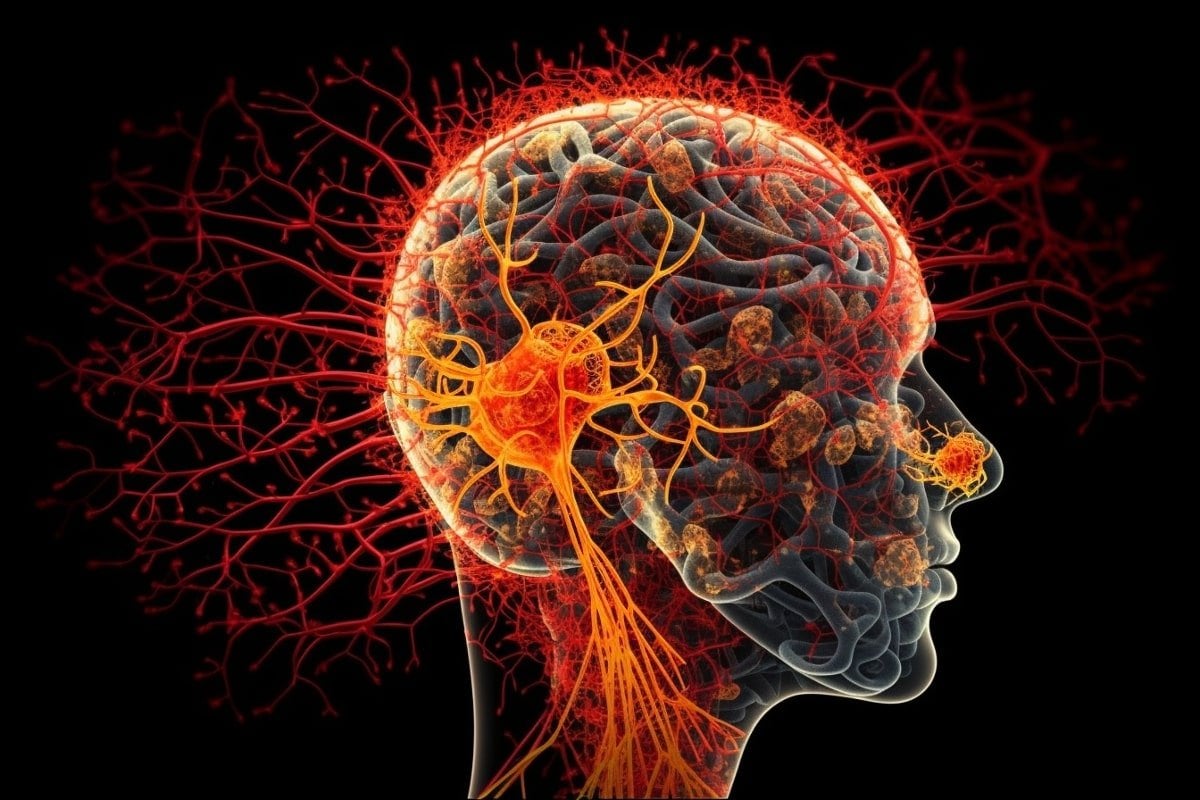Summary: A revolutionary MRI technique, known as Correlated Diffusion Imaging (CDI), has been utilized to uncover previously unseen changes in the brain caused by COVID-19. The study revealed distinct changes in the diffusion of water molecules within the brain’s white matter.
These findings not only reinforce the fact that COVID-19 affects the brain but also suggest the cerebellum might be particularly vulnerable.
Key Facts:
- The CDI technique, initially developed to detect cancer, successfully unveiled COVID-19’s impact on the brain.
- The study showed distinct diffusion abnormalities in the white matter of the cerebellum in COVID-19 patients.
- Findings from the study suggest the cerebellum may be particularly susceptible to COVID-19 infections.
Source: University of Waterloo
A University of Waterloo engineer’s MRI invention reveals better than many existing imaging technologies how COVID-19 can change the human brain.
The new imaging technique known as correlated diffusion imaging (CDI) was developed by systems design engineering professor Alexander Wong and recently used in a groundbreaking study by scientists at Baycrest’s Rotman Research Institute and Sunnybrook Hospital in Toronto.
“Some may think COVID-19 affects just the lungs,” Dr. Wong said. “What was found is that this new MRI technique that we created is very good at identifying changes to the brain due to COVID-19. COVID-19 changes the white matter in the brain.”

Wong, a Canada Research Chair in Artificial Intelligence and Medical Imaging, had previously developed CDI in a successful search for a better imaging measure for detecting cancer. CDI is a new form of MRI that can better highlight the differences in the way water molecules move in tissue by capturing and mixing MRI signals at different gradient pulse strengths and timings.
Researchers at Rotman, a world-renowned centre for the study of brain function, saw Wong’s imaging discovery and thought it could likely also be used to identify changes to the brain due to COVID-19. Subsequent tests proved that theory right.
The CDI imaging of frontal-lobe white matter revealed a less restricted diffusion of water molecules in COVID-19 patients. At the same time, it showed a more restricted diffusion of water molecules in the cerebellum of patients with COVID-19.
Wong highlights that the two regions of the brain react differently to COVID-19 and points to two key findings from the research. First, the human cerebellum might be more vulnerable to COVID-19 infections. Second, the study reinforces the idea that COVID-19 infections can lead to changes in the brain.
Not only is the Rotman study one of the few to have shown COVID-19’s effects on the brain, but it is the first to report diffusion abnormalities in the white matter of the cerebellum. Although the study was designed to show changes, rather than specific damage, to the brain from COVID-19, its final report does discuss potential sources of such changes and many link to disease and damage.
In response, Wong suggests future tests could focus on whether COVID-19 actually damages brain tissue. Additional studies could also determine if COVID-19 can change the brain’s grey matter.
“Hopefully, this research can lead to better diagnoses and treatments for COVID-19 patients,” Wong said. “And that could just be the beginning for CDI as it might be used to understand degenerative processes in other diseases such as Alzheimer’s or to detect breast or prostate cancers.”
About this neuroimaging and neuroscience research news
Author: Ryon Jones
Source: University of Waterloo
Contact: Ryon Jones – University of Waterloo
Image: The image is credited to Neuroscience News
Original Research: Open access.
“Feasibility of diffusion-tensor and correlated diffusion imaging for studying white-matter microstructural abnormalities: Application in COVID-19” by Alexander Wong et al. Human Brain Mapping
Abstract
Feasibility of diffusion-tensor and correlated diffusion imaging for studying white-matter microstructural abnormalities: Application in COVID-19
There has been growing attention on the effect of COVID-19 on white-matter microstructure, especially among those that self-isolated after being infected. There is also immense scientific interest and potential clinical utility to evaluate the sensitivity of single-shell diffusion magnetic resonance imaging (MRI) methods for detecting such effects.
In this work, the performances of three single-shell-compatible diffusion MRI modeling methods are compared for detecting the effect of COVID-19, including diffusion-tensor imaging, diffusion-tensor decomposition of orthogonal moments and correlated diffusion imaging.
Imaging was performed on self-isolated patients at the study initiation and 3-month follow-up, along with age- and sex-matched controls. We demonstrate through simulations and experimental data that correlated diffusion imaging is associated with far greater sensitivity, being the only one of the three single-shell methods to demonstrate COVID-19-related brain effects.
Results suggest less restricted diffusion in the frontal lobe in COVID-19 patients, but also more restricted diffusion in the cerebellar white matter, in agreement with several existing studies highlighting the vulnerability of the cerebellum to COVID-19 infection.
These results, taken together with the simulation results, suggest that a significant proportion of COVID-19 related white-matter microstructural pathology manifests as a change in tissue diffusivity.
Interestingly, different b-values also confer different sensitivities to the effects. No significant difference was observed in patients at the 3-month follow-up, likely due to the limited size of the follow-up cohort.
To summarize, correlated diffusion imaging is shown to be a viable single-shell diffusion analysis approach that allows us to uncover opposing patterns of diffusion changes in the frontal and cerebellar regions of COVID-19 patients, suggesting the two regions react differently to viral infection.






